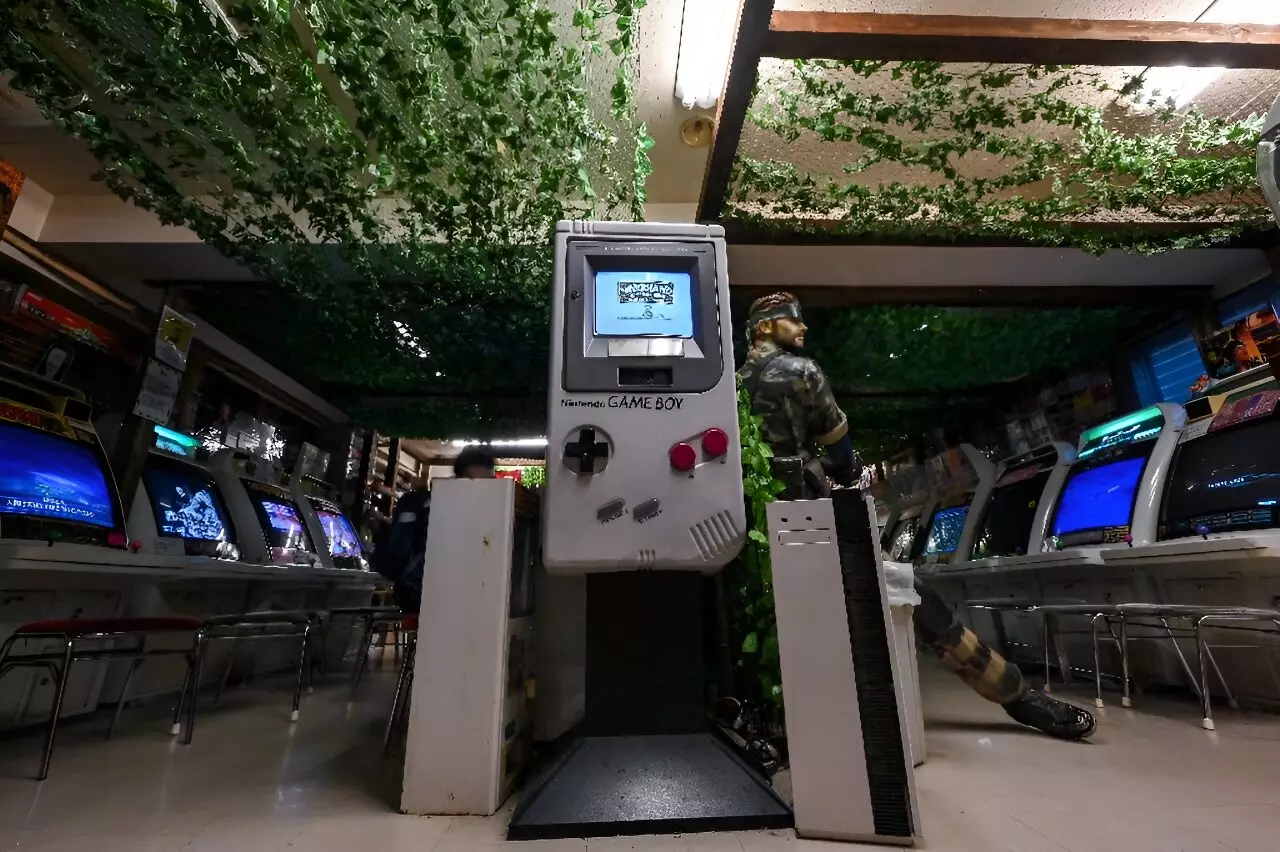In an era dominated by ever-advancing technology and cutting-edge gaming consoles, the allure of retro gaming has never been more pronounced. For many enthusiasts, purchasing vintage consoles is akin to stepping back into their childhood, rekindling memories of simpler times. David Madrigal, a 23-year-old American tourist, recently experienced this magic firsthand while browsing through the celebrated Super Potato store in Tokyo’s vibrant Akihabara district, a hub for all things related to Japanese pop culture.
“Walking into this store felt like stepping into a treasure trove,” Madrigal shared, reflecting on the overwhelming excitement of seeing shelves stocked with classic gaming paraphernalia. His $200 investment in a PS Vita—a console typically fetching around $600 stateside—illustrates the unique lure of Japan’s retro gaming scene. Stores like Super Potato cater to a burgeoning clientele of foreign visitors, with estimates stating that international shoppers make up 70-80% of the store’s foot traffic. This phenomenon can largely be attributed to the international nostalgia that surrounds vintage consoles, as they echo the memories and desires of gamers who grew up in a different age.
Why Retro Gaming Holds a Special Place in Our Hearts
The allure of older video games can be traced to a sense of innovation that characterized the early years of gaming. According to Madrigal, many current titles seem to repeat established formulas, squashing the creativity that once flourished in earlier designs. In comparison to today’s sequels and franchises, vintage games dared to explore uncharted territory, providing unique experiences that continue to captivate players. The early gaming landscape was a playground for imagination, where risk-taking was simply part of the game’s fabric.
Video game historian Hiroyuki Maeda corroborates this sentiment, noting that the differing marketing strategies of consoles also contribute to their nostalgic appeal. For instance, Nintendo’s Famicom and Super Famicom, released with varied aesthetics in international markets, evoke curiosity in collectors. Maeda emphasizes that encountering a console that one has never seen before during a visit to Japan can ignite a fervent desire to own it, tapping into a collector’s innate instincts.
The Rare Treasures of Collectors
Collecting retro games isn’t merely a hobby; for some, it transforms into a passion project that goes beyond playing the games. Take the example of a collector known online as Proudro—he operates an entire building filled with vintage gaming relics collected over the years. Proudro claims that his motivation stems from nostalgia, recalling the excitement of spending time in gaming shops and battling friends in multiplayer settings.
Despite the substantial time and resources he has invested in his collection, Proudro himself admits he rarely engages with modern games. Instead, he cherishes the ambiance created by vintage games—the nostalgic sounds, the visual aesthetics, and the stories behind each console. For him, it’s not just about playing; it’s about the memories these artifacts embody.
The economic landscape surrounding retro gaming has experienced a dramatic shift over the past few decades. While up until the late 1990s, vintage games were often regarded as worthless, today they command astonishing prices. For example, a still-wrapped version of “Super Mario Bros.” sold for an extraordinary $2 million in 2021. The transformation from discarded relics to coveted treasures signifies a paradigm shift in how society values video game history.
Reflecting on his experiences of two decades ago, Proudro recalls traveling around Japan, salvaging forgotten stock from quaint toy shops. Often, he would receive games for a few onions or potatoes, a clear contrast to today’s competitive resale market. As the internet has reshaped the way collectors interact and trade, many of these small businesses have vanished from the landscape.
Proudro’s journey is also inherently cultural. Despite the flourishing global interest in retro gaming, he expresses a profound desire for Japan’s rich gaming history to remain within its borders. He analogizes this to the fate of traditional woodblock prints—art forms that once traveled abroad only to be appreciated, later returning to their native land. Proudro laments the slow realization among Japanese society of the intrinsic value these vintage gaming systems and memorabilia hold.
Japan’s vintage gaming scene is not only a treasure trove of nostalgic artifacts but also a cultural phenomenon bridging generations. As the world witnesses renewed interest from collectors and enthusiasts, it remains crucial to recognize and appreciate the rich history and innovation rooted in these retro consoles. The passion of individuals like Madrigal and Proudro continues to keep the spirit of classic gaming alive, ensuring that those memories echo through time in the hearts of gamers worldwide.

